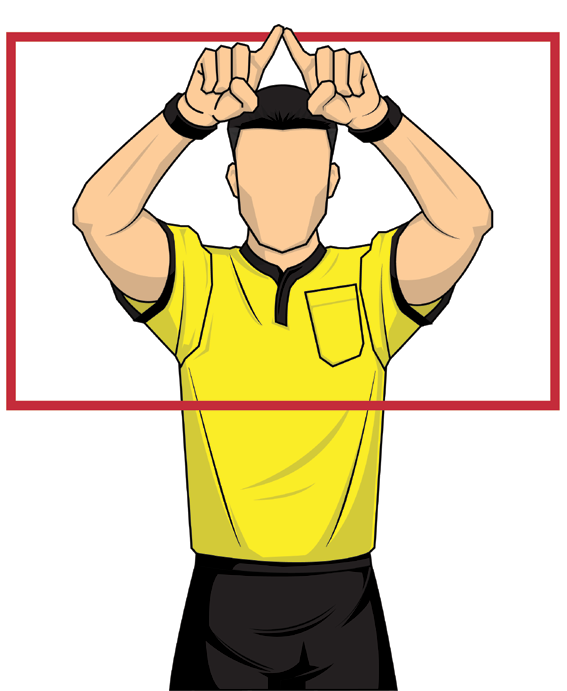Just as red and yellow cards have become commonplace since being introduced to the World Cup in 1970, the use of the new Video Assistant Referee (VAR) is set to grow in the future after a highly successful debut at the recent World Cup in Russia.
Amid all the memorable moments from the 2018 World Cup in Russia, one gesture will go down in the annals of football history. Referees, players, coaches and even fans in the stands have mastered drawing the shape of a rectangle in the air, mimicking the shape of a TV and a reference to officials seeking assistance from the new Video Assistant Referee, or VAR for short.
Statistically speaking, VAR proved to be a success at this World Cup. After the group stage, statistics from FIFA showed that among all group stage matches, VAR checked 335 incidents (around seven per game) and was used for 17 full reviews (14 on the field by the referee and three inhouse “factual decisions” that can be made on issues like offside or mistaken identity). After those 17 reviews, 14 initial referee decisions were reversed (including seven penalty kicks awarded and two withdrawn) and three calls were confirmed.
Pierluigi Collina, the former legendary referee who now heads FIFA’s refereeing committee, also revealed one other impressive stat: in the group stage, referees called 95% of incidents correctly without the use of VAR. When called upon, it helped improve that success rate by more than four percent to 99.3%.
The system is not entirely infallible. For example, England’s Harry Kane was fouled twice in the group game against Panama without being awarded penalties by VAR. Nevertheless, the general performance of VAR won much applause worldwide and initial skepticism around the technology is now gradually fading away.

One of the key lines of criticism around VAR is the possibility of breaking the free-flowing nature of games. In contrast to cricket, tennis and NFL – sports in which video systems are used widely – the action never stops in football. Free-flowing play and quick transition is the major attraction of this sport globally. That’s why there were concerns that seeking help from VAR may ruin the spectacle.
VAR is gradually being adopted around the world and in the 2017/2018 season was broadly introduced to most European leagues. England is one of the slower leagues on the uptake, using VAR only in some selected FA Cup matches. When it was used, its results were up and down to say the least.
In the FA Cup match between Liverpool and West Brom in January, referee Craig Pawson proactively looked for help from VAR eight times and in one instance when Mohamed Salah was fouled in the box, Pawson took more than four minutes to award a penalty. Both managers, Alan Pardew and Jürgen Klopp, shared their dissatisfaction with VAR as it constantly broke up the tempo of the match while keeping the fans, coaches and players in the dark.
After the match, retired referee Chris Foy shared his perspective on the matter.

“The thing is, when we’ve looked at VAR – we’ve seen it in MLS and Serie A and Bundesliga – it takes about two minutes and 30 seconds when the referee goes to the referee review area to look at the decision. And I think the most important thing is … yes it takes time, but itʼs about getting the big decision right. And I imagine as we move on it will take less time. Four minutes is a long time but as I’ve said the average is about two minutes-thirty, but this is only the sixth time we’ve used it in England and I think this is the first time the referee has been over to the screen so we donʼt want to be too critical. It will get better. It is the start of a journey and letʼs just see where it takes us.”
It does get better. Thanks to this World Cup, punctuated games are no longer the major concern for VAR. Nowadays, the public’s focus is more on the “obvious missing” of crucial fouls. According to FIFA rules, VAR can only be used in the case of four types of major decision: goals, penalties, red cards and mistaken identities. Since these decisions usually have a great influence on the result of the game, VAR is becoming increasingly important.
Some crucial decisions from VAR directly changed the results of games in the World Cup group stage. In Spain’s final group match against Morocco, Iago Aspas scored in the 91st minute to bring Spain back on level terms at 2-2. But the goal was originally flagged out for offside. VAR corrected that decision after the referee saw that Morocco’s Mbark Boussoufa had played Aspas onside. This goal helped Spain leapfrog Portugal to claim top position in their group.
Like the trend of other key technologies being introduced to the world, VAR is also adjusting with the game and the public. As Collina himself said, “It’s impossible to be right from the start. We intervened and fine-tuned.”
We have now witnessed the “fine-tuned” VAR in the World Cup – and its future looks bright.







